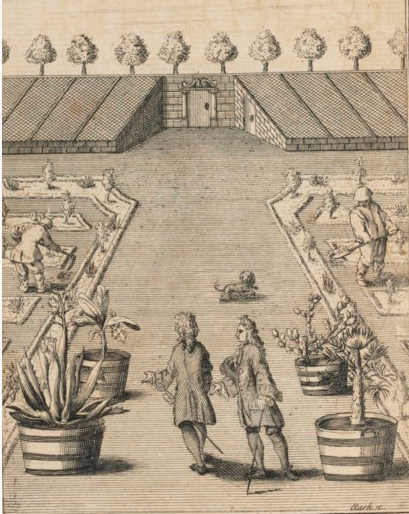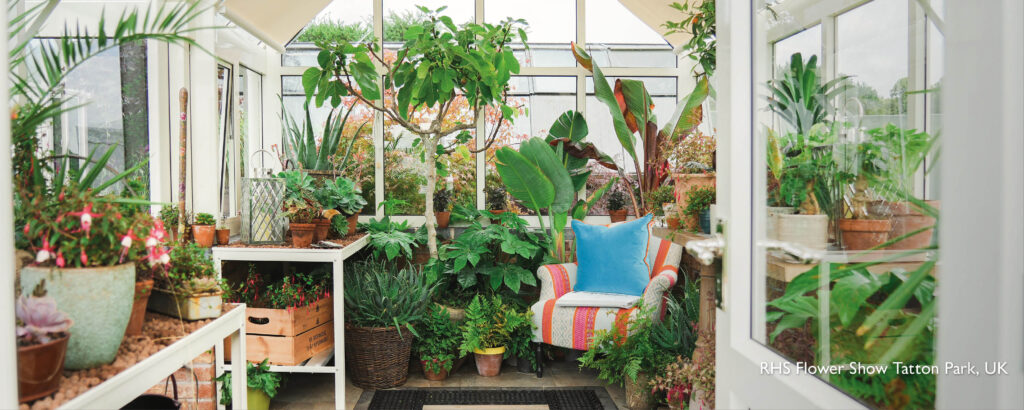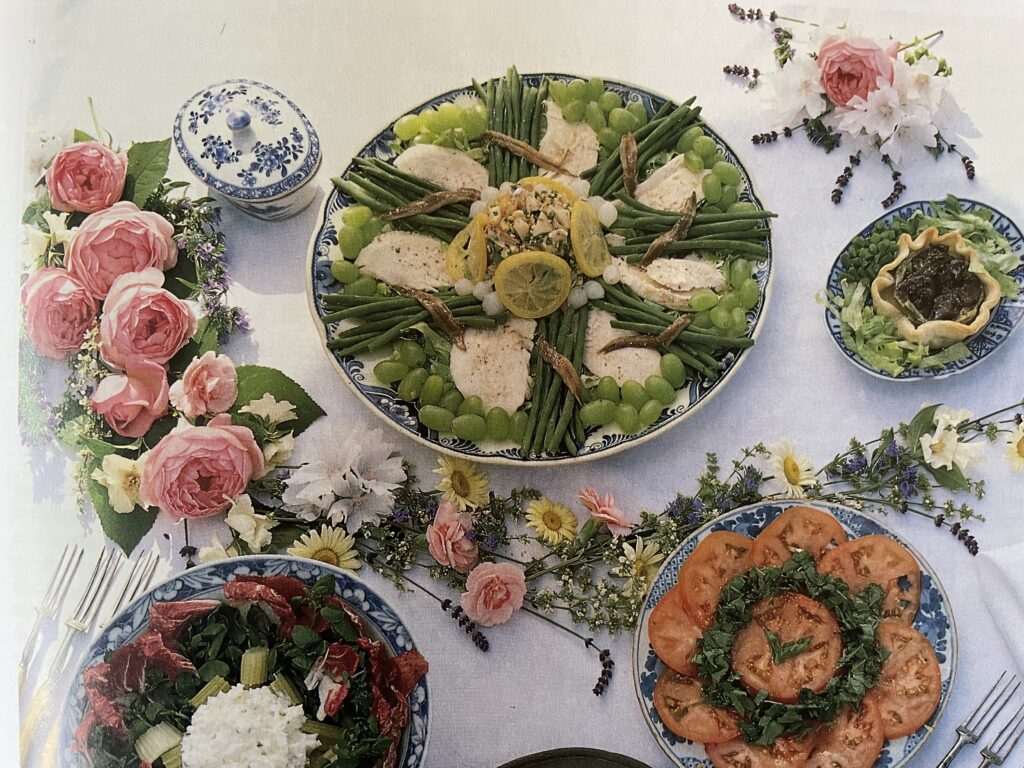Three days from now it’ll be Earth Day 2024, and thoughts turn to the climate, which of late can be described–at best–as uneven; right now, snow is forecast for tomorrow, but on Earth Day, the sun will shine, and the snow will water the garden as it melts. My one lonely daffodil will be pleased.
It’s at moments like this when a heated greenhouse really comes into its own. Seed can be sown, tomato plants cossetted, and my pot-grown olive tree, rosemary and lemon verbena polished and fluffed in readiness for transfer to the great outdoors.

Early greenhouses were truly horticultural “laboratories” and key to the early introduction of North American plants, crop and ornamental, to Europe during the 17th-18th centuries. One of the first examples of such was at Thomas Fairchild’s London garden at Hoxton. There he raised many rarities collected by his friend Mark Catesby, who plant-hunted in the colonies from Virginia to the Bahamas.

These musings recall a Hartley Botanic greenhouse I saw at the Chelsea Flower Show some years ago; a moment of revelation for although underpinning the gardener’s hard work, it was also a place of repose, handsomely propped with a cushioned wicker chair, a teapot and cup set on a small table, with a few gardening books for a quiet read. Up to that point, my greenhouse was a labor-intensive laboratory for experimental sowings of frost-tender edibles. But that setting changed my perception of what one could do under glass to include relaxing! And furthermore, for entertaining. All that was missing was Bach’s Cello Suites to enhance the mellowness of the moment.

This is the time to plan garden parties, where the payoff for you is the satisfying “oohs” and “aahs” from friends admiring the creativity and skill of your gardening, while their reward is to sample all the deliciousness that comes fresh from the garden. Simple salads of “…chives, scallions, radishes, boiled carrots…young lettuce, cabbage leaves” dressed with vinegar and oil to “compound sallets” as elaborate dishes were named in the 17th century; these were pictures on a plate made with “young buds and knots of all manner of wholesome Herbs at their first springs; Red sage, Mint, lettuce Violets, Marigolds, Spinage and many other mixed together and served up to table with Vinegar, oil and sugar. Such salads are described by Gervase Markham in his book A Way to Get Wealth, published in 1676. Some 50 years later, Richard Bradley had published The Country Housewife and Lady’s Director, a monthly guide to seasonal recipes and tasks for the “management of a house, and the delights and profits of a farm”. Richard Bradley was a close friend of Thomas Fairchild and said of him that he was “the most rational gardener I ever met with.” No doubt they shared a compound sallet together at some point, as well as cuttings and seeds to feed their passion for gardening.
Such, then as now, are the rewards of Spring: freshness in renewing friendships and sharing lovingly prepared foods. ENJOY!!!
©Ethne Clarke, 2024
For more information on topics referred to in my article:
About Thomas Fairchild: https://thegardenstrust.blog/2017/06/03/thomas-fairchild/
To peruse an edition of the The Country Housewife and Lady’s Director: https://www.google.com/books/edition/The_Country_Housewife_and_Lady_s_Directo/nppgAAAAcAAJ?hl=en&gbpv=1&pg=PR3&printsec=frontcover
The Art of the Kitchen Garden is out of print, but available https://www.abebooks.com/9780394570686/Art-Kitchen-Garden-Ethne-Clarke-0394570685/plp










